Beef-o-tuna-tarianism: The low effort way to improve animal welfare
08 Jan 2025At some level, most people know that factory farming is an indefensible way to treat animals. At the same time, meat is delicious, and most people aren’t willing to adopt a fully vegan lifestyle. If that resonates with you, I’d like to propose a new diet.
For a while now, I’ve been a beef-o-tuna-tarian. As a beefotunatarian I can eat beef, tuna, and dairy, although in practice I only have beef or tuna once a week. This diet drives thousands of times less animal suffering than conventional diets, while still providing a reasonable amount of meat. It’s a low-effort, high-impact way of improving animal welfare.
Why beef and tuna? The core idea behind beefotunatarianism is that bigger animals probably have only somewhat higher moral weight than smaller animals, yet provide thousands of times more calories. That makes big animals like cows and tuna a good option.
This post isn’t meant to judge or tell anyone what they must eat. But as we ring in the new year, I’d like to make a case that if you want to eat meat while minimizing animal suffering, beef-o-tuna-tarianism is the way to go.
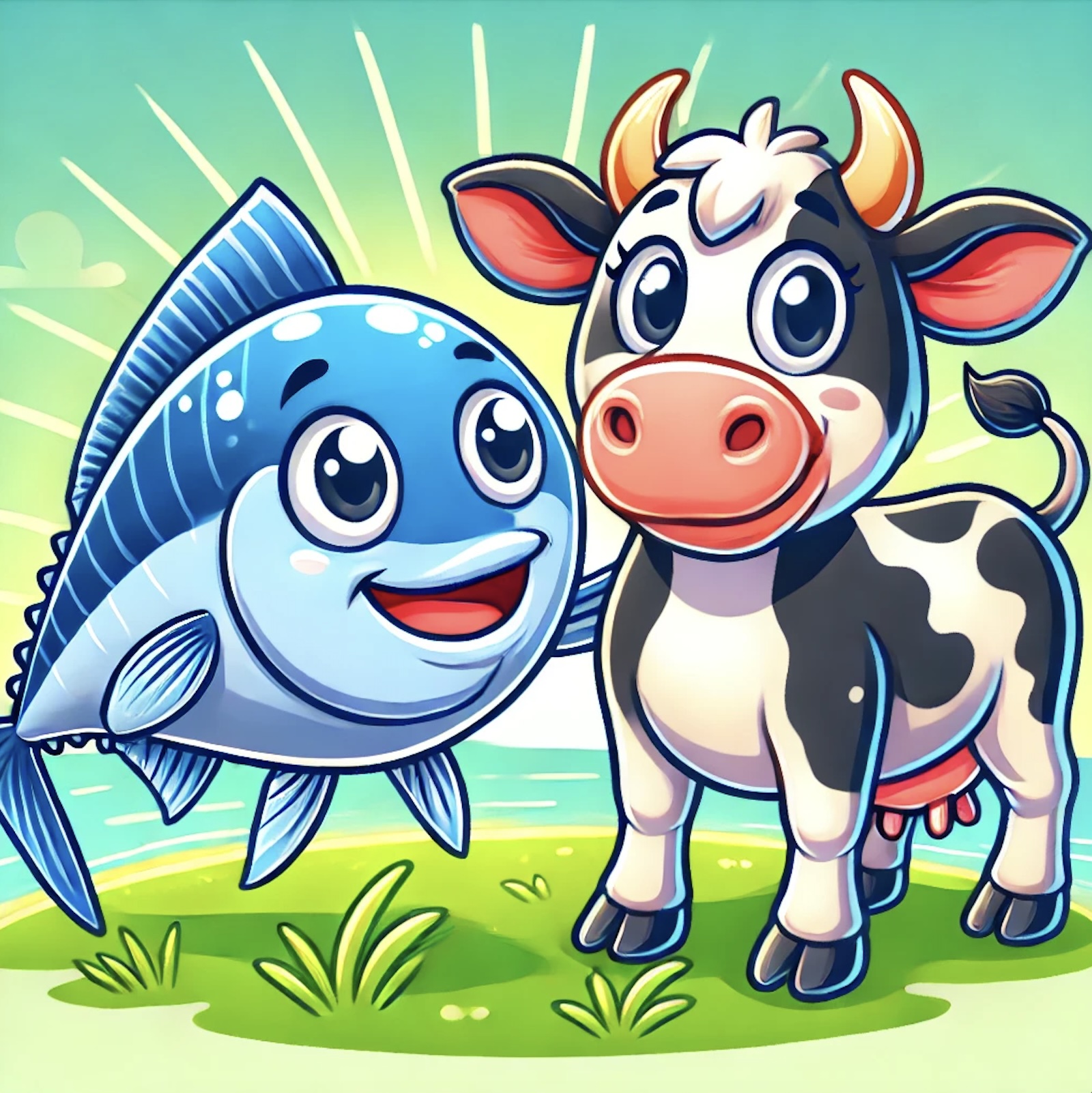
Minimizing welfare lost per calorie
Hot take, but eating animals reduces their welfare. So if you want to eat a certain number of calories from animals, you might want to minimize the welfare lost per calorie. But as we’ll see, there’s an interesting distinction between how this works for farmed animals and wild animals.
- For farmed animals, beef minimizes the suffering per calorie
- For wild animals, tuna minimizes the welfare deprived per calorie
I’ll explain more about what I mean in the rest of this post.
Beef is the best farmed animal food
Factory farming is pretty inhumane. Because of these poor conditions, most species of farmed animals lead negative lives. Eating farmed animals is wrong not so much because we kill the animal, but because we create demand for more of these animals, which leads to more suffering.
But among these animals, cows provide the best outcome for animal welfare.
The first reason is their size. A cow contains 3 times more calories than a pig, and 250 times more calories than a chicken. So if we assume each of those animals suffers roughly the same, there is far more suffering per calorie in pigs and chickens than there is in beef.
Second, it’s not clear that cows live negative lives. Whereas pigs and chickens live in small crates and cages, cows typically have a lot more space, and might actually live positive lives.
Let’s try to capture this quantitatively. With a few assumptions (described below), we can roughly estimate the adjusted suffering per 1,000 calories for each commonly farmed animal.
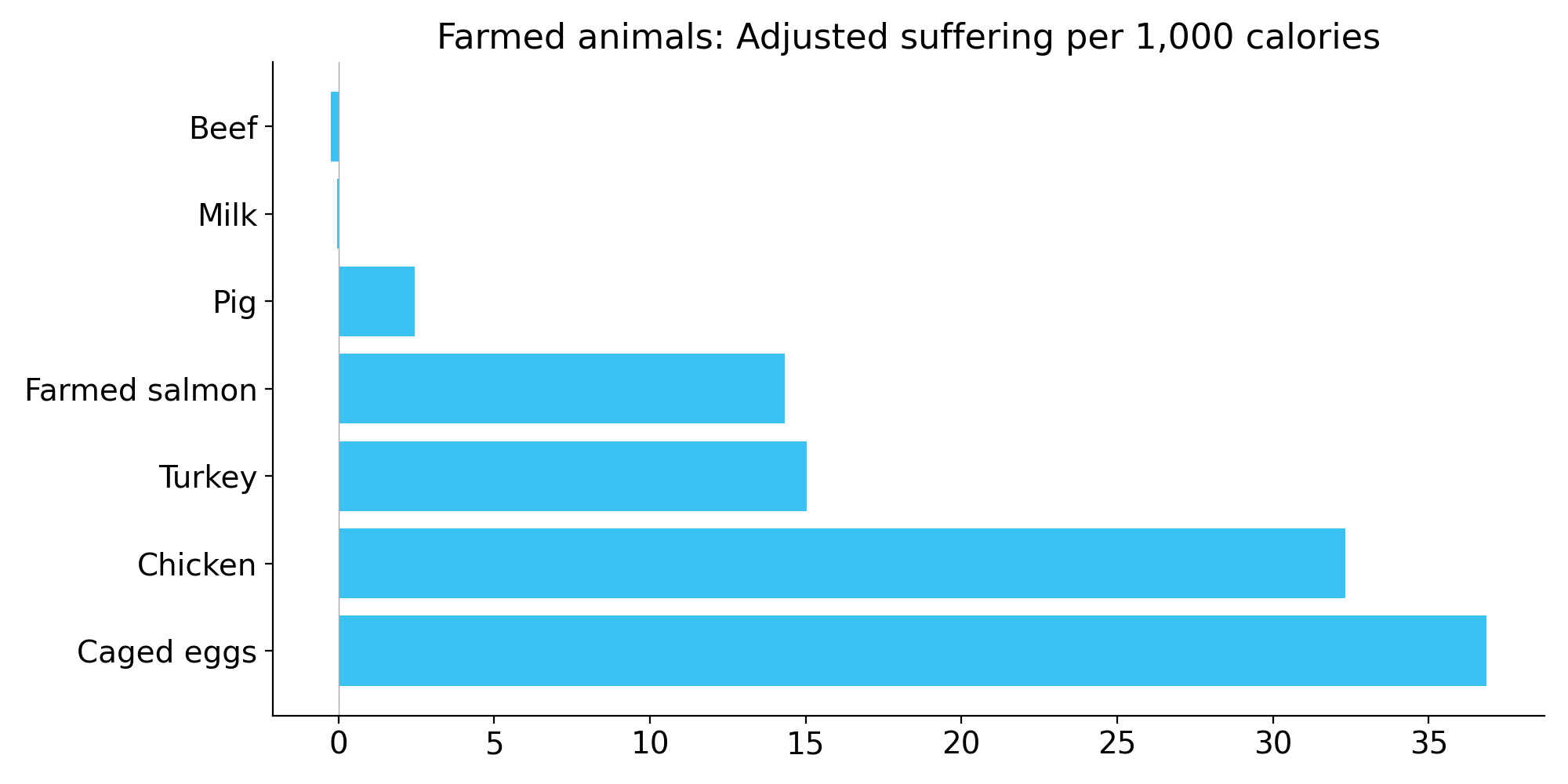
As shown above, chickens and caged hens suffer a lot for every 1,000 calories we consume. Shrimp (not shown) fare even worse. Cows suffer far less, and may in fact experience negative suffering per calorie (i.e. positive welfare).
Details
I reached these estimates by starting with the number of individual animals per 1,000 calories (green graph, below). Then, based on the animal’s lifespan, I calculated the number of days lived per 1,000 calories (orange). Then, based on subjective estimates of each animal’s adjusted suffering per day, I calculated the aggregate adjusted suffering per 1,000 calories (blue). The suffering per day estimates are adjusted for estimates of each species’ welfare range, which you can loosely think of as moral worth. More details are in the Methods doc, where you can input your own assumptions and create your own graphs.
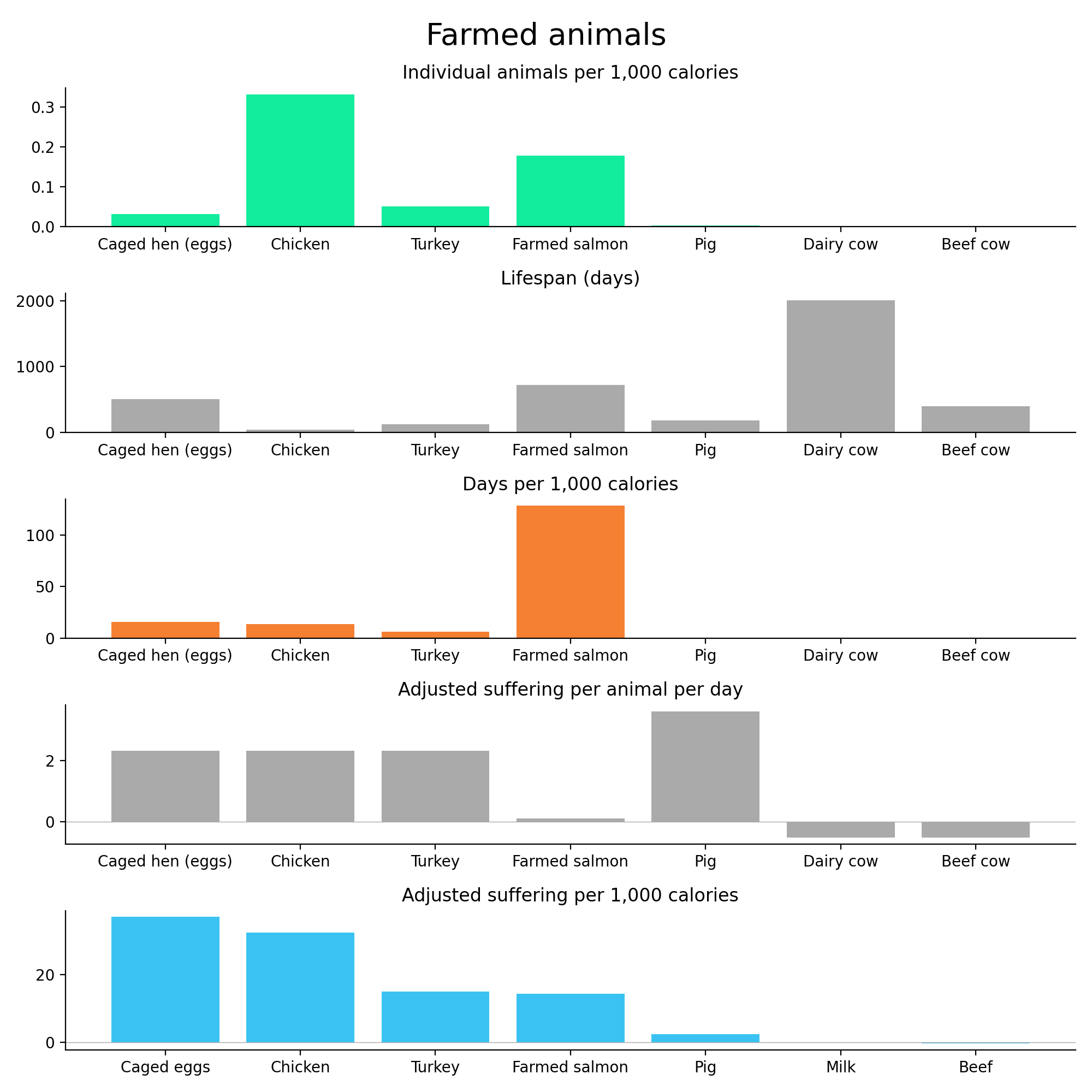
Tuna is the best wild animal
Wild animals differ from farmed animals in two key ways.
First, while not everyone agrees, I think that most wild animals live positive lives. So when we hunt them, the main harm we do is depriving them of some future life and possibly giving them a more painful death than they’d experience otherwise.
Second, whereas consumption of farmed animals creates market demand for a new (suffering) animal to replace the one you ate, no new wild animal fully replaces the one you ate.
So whereas for farmed animals, the relevant metric is adjusted suffering per 1,000 calories, for wild animals the relevant metric is adjusted welfare deprived per 1,000 calories.
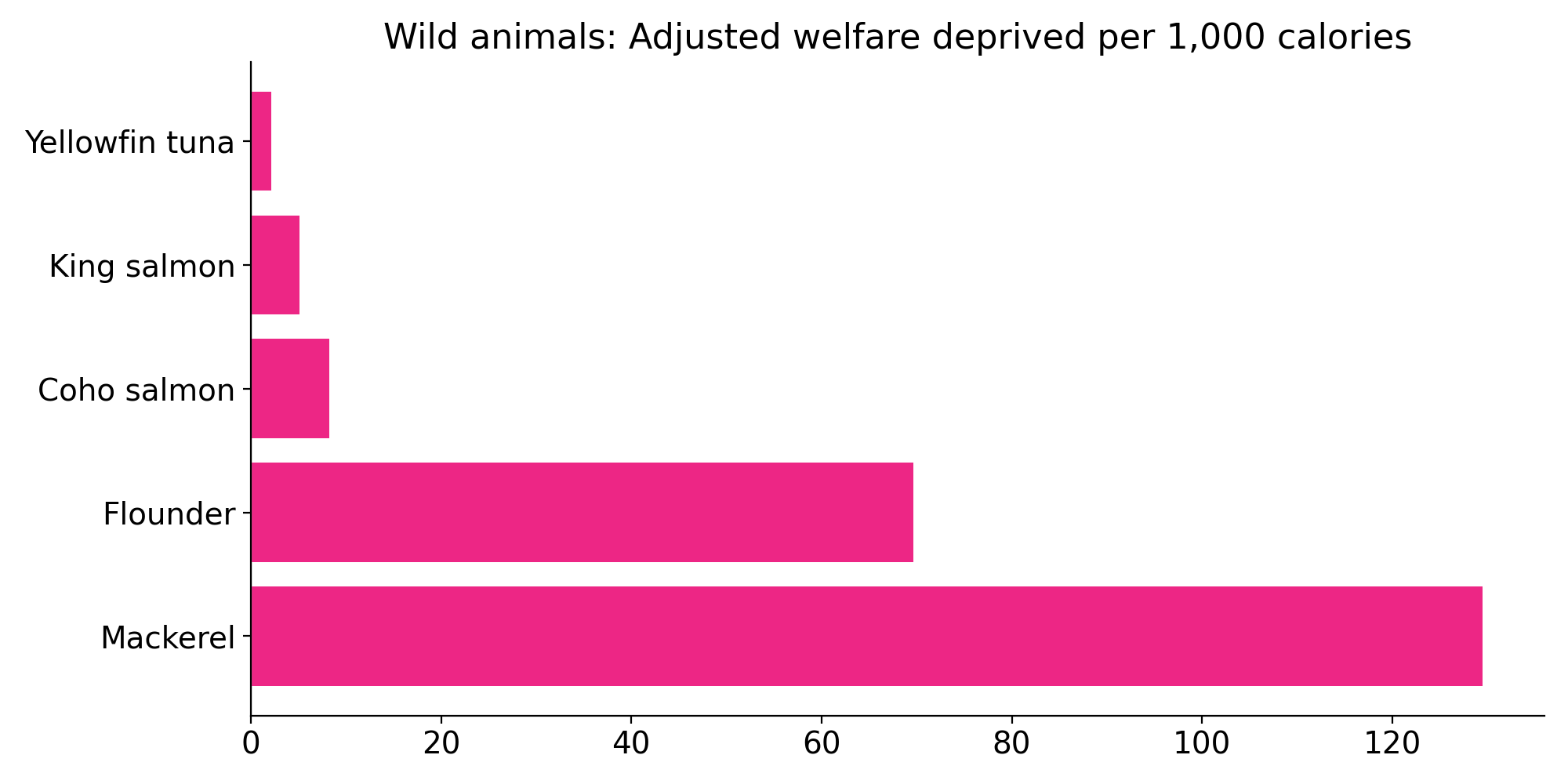
As seen in the graph above, smaller fish like flounder and mackerel are deprived of more welfare than larger fish like tuna. Similar results would be obtained if we used the number of painful deaths per 1,000 calories as our metric.
Details
To make these estimates, I started with the number of individual animals per 1,000 calories (green). These are high for small fish like mackerel and low for large fish like tuna. If we multiply by the life days deprived per animal killed, we can calculate the number of life days we deprive for every 1,000 calories (orange). Finally, we can use subjective estimates of each animal’s welfare per day to compute the adjusted welfare deprived per 1,000 calories (blue). More details are in the Methods doc.
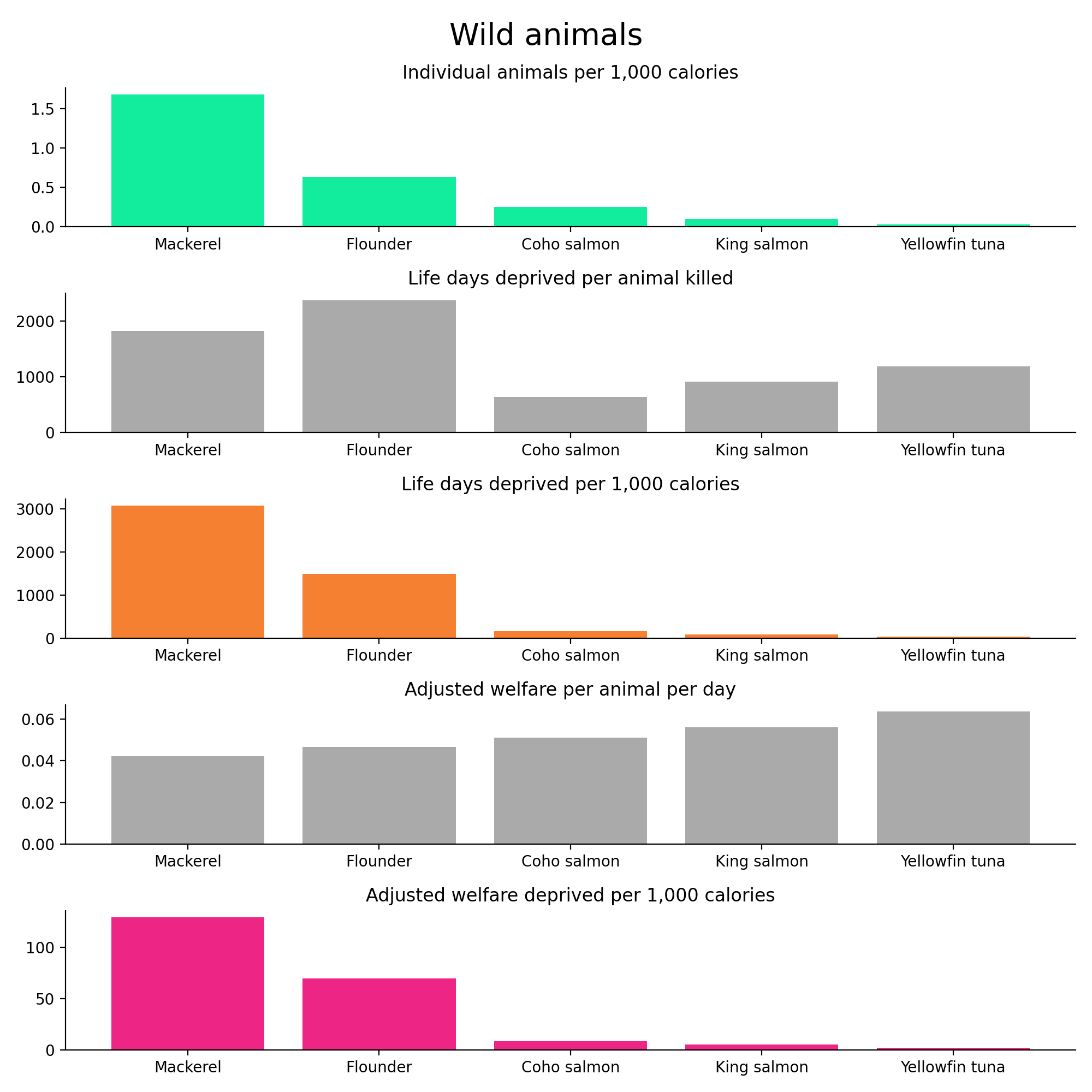
Beef and tuna are best overall
If cows are the best farmed animal and tuna are the best wild animal, are they the two best animals overall? Fortunately, the scores for farmed and wild animals can be directly compared because they are already on the same scale. Suffering is negative welfare, which means both metrics measure welfare lost per 1,000 calories.
Putting them all on the same graph, we see that cows and tuna emerge as the best choices for minimizing animal welfare loss.

Interestingly, pigs come close to tuna, despite the awful conditions they endure on factory farms. Pigs come close because (1) they provide about 8x calories per animal compared to tuna and (2) they only suffer for 1/6 the duration that tunas are deprived of life. Still, I choose to exclude pigs from my beefotunatarian diet as a protest against the conditions of factory farming.
FAQs
What about climate change?
Cows produce more carbon emissions than other animals. I only eat beef once a week, but I’m not too bothered by the climate impacts relative to other animals, since animal welfare is arguably much more important than climate change. See for example this napkin math from Vasco Grilo.
The harm caused to humans by the annual GHG emissions of a random person is 0.0660 DALY, and that caused to farmed animals by their annual food consumption is 4.04 DALY, i.e. 61.2 times as much. In my mind, this implies one should overwhelmingly focus on minimising animal suffering in the context of food consumption.
What about conservation?
Some tuna species are overfished, but the yellowfin tuna is not considered at risk. Still, I probably have tuna only once every 3 weeks, and I stay away from endangered species like the bluefin tuna.
What if I don’t want to give up eggs?
I eat some eggs, but they are all cage free, which at 10 cents more per egg is pretty affordable.
How confident are you that this diet is good for animal welfare?
Like anyone thinking about animal welfare, I have a huge amount of uncertainty. A big source of uncertainty is about welfare ranges. But even worse, if I’m wrong that wild animals have positive lives or that farmed animals have negative lives, all the signs flip! And I’m not even counting the second-order effects on other animals, like predators, prey, and the wild animals displaced by farming. For now though, I’m satisfied with beefotunatarianism as a protest against the unambiguous evils of pig and chicken factory farming.
Further reading
- My methods
- Foodimpacts.org: Nifty site that allows you to incorporate how much you prioritize animal welfare and climate change. Many of my parameters were drawn from this site. However, for animal welfare they do not incorporate any estimate on how much each animal actually suffers.
- Brian Tomasik’s interactive calculator: Influential calculator from 2007, periodically updated since then. Limited to farmed animals.
Thanks to Aaron Bergman for discussions.
